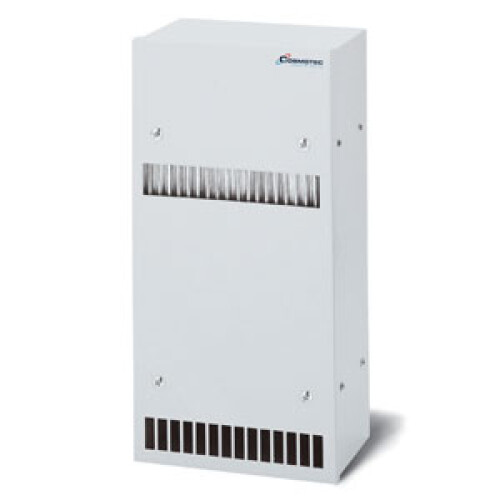Heat exchangers
Heat exchangers: technology, efficiency, and innovation
Heat exchangers are a fundamental component in the air conditioning and climate control sector. These devices, designed to transfer heat between two or more fluids at different temperatures, are used in a wide range of industrial and commercial applications, from heating and cooling systems to energy recovery plants.
In a context where energy efficiency and sustainability are increasingly in focus, heat exchangers play a crucial role in optimizing thermal processes.
Types of heat exchangers
There are several types of heat exchangers, each with specific characteristics and applications. The most common include:
- Plate heat exchangers: These devices use thin metal plates to separate fluids, creating a large contact surface for heat transfer. They are known for their high efficiency and compact design, making them ideal for applications where space is limited.
- Shell-and-tube heat exchangers: This type consists of a bundle of tubes through which one of the fluids flows, while the other circulates around the tubes. They are particularly robust and suitable for high-pressure and high-temperature applications, such as in chemical and petrochemical plants.
- Brazed plate heat exchangers: An evolution of traditional plate exchangers, these devices feature a gasket-free design, thanks to the brazing of the plates. They offer greater resistance to high pressures and have a longer lifespan, making them ideal for critical applications.
Main applications of heat exchangers
Heat exchangers are used in various sectors, each benefiting from specific technologies. In the HVAC sector, for example, they are used to heat, cool, and ventilate spaces, maintaining optimal comfort while minimizing energy consumption. In industrial plants, they are essential for recovering heat from production processes, reducing energy costs, and improving operational efficiency.
Another significant area of application is refrigeration, where heat exchangers transfer heat from refrigerants to the external environment, ensuring low temperatures in controlled environments. Additionally, in renewable energy applications, such as solar thermal systems, these devices transfer heat collected by solar panels to a carrier fluid, which then distributes thermal energy within buildings.
Heat exchangers: innovation and sustainability
Technological advancements in heat exchangers are largely driven by the need to improve energy efficiency and reduce environmental impact. Recent developments focus on innovative materials, optimized designs, and advanced manufacturing technologies, enabling the production of more compact, lightweight, and durable heat exchangers.
For example, the use of materials such as aluminum and titanium is becoming increasingly common due to their excellent thermal properties and corrosion resistance. Additionally, additive manufacturing techniques, such as 3D printing, are enabling the creation of complex internal geometries that maximize the heat exchange surface, further improving efficiency.
From a sustainability perspective, reducing heat loss and optimizing heat transfer are key to lowering energy consumption and, consequently, greenhouse gas emissions. In this context, integrating heat exchangers into energy recovery systems and renewable energy plants is an effective solution for promoting environmental sustainability.









